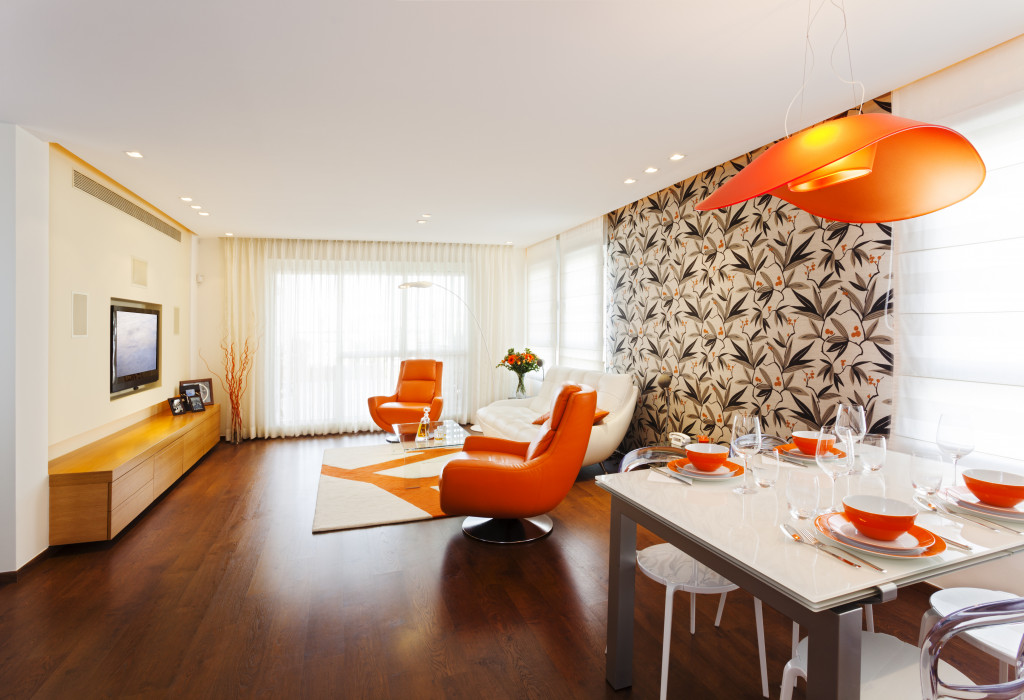- Emphasize minimalism in physical and digital spaces, choosing quality over quantity and reducing waste.
- Incorporate natural elements like plants and wood furniture to add warmth and character to your space.
- Focus on functionality and comfort, ensuring your furniture serves a purpose, and your home feels cozy.
- Use color and lighting strategically, considering the purpose of each room and how different hues and light sources can enhance the mood.
- By incorporating these tips, create a space that reflects your personality and brings you joy and relaxation.
Your living space is your castle; you must make it look as good as possible. For millennials, creating an aesthetically pleasing home is more than just putting together furniture or decorating with the latest trends. It’s a reflection of your personality, tastes, and worldview.
Whether you’re moving into your first home or want to spruce up your current residence, this article will provide several tips for creating a stylish and inviting space.

Embrace Minimalism
Millennials don’t want to have a lot of possessions cluttering their homes. Instead, they prefer fewer, high-quality items that spark joy and add value to their daily lives. Embrace the minimalist trend by purging your home of unnecessary items and opting for furniture and decor that have multi-functional purposes. This creates a more streamlined and organized living space and aligns with the sustainability movement by reducing consumption and waste.
Digital Clutter
In addition to physical possessions, minimalism can be applied to digital clutter. Unsubscribe from unnecessary emails, delete unused apps on your phone, and declutter your desktop. This will not only increase productivity and reduce distractions, but it will also have a positive impact on mental well-being.
Focus on Natural Elements
Incorporating natural materials and elements into your home adds warmth, texture, and earthiness. For example, you can bring plants, wood furniture, or a natural woven rug. A stone or wood accent wall can also give your space character and a rustic feel. Consider implementing these ideas to add a touch of nature to your home.
Plants
Bringing plants into your space adds greenery and life and has numerous health benefits. Plants purify the air by removing toxins and producing oxygen, creating a cleaner and healthier environment for you to live in. They can also reduce stress levels and improve overall mood, making your home more relaxing and peaceful. Some easy-to-care-for indoor plants include succulents, ferns, and peace lilies.
Wood Furniture
Incorporating wood furniture into your home adds warmth and texture while bringing in an element of nature. These natural pieces can add character and charm to any room, whether a solid wood dining table or a reclaimed wood coffee table. Wood is a sustainable and eco-friendly material, making it a great choice for those looking to live a more environmentally conscious lifestyle.
Focus on Functionality
Functional programming is a popular paradigm focusing on building software by composing pure functions. These functions are small and self-contained, which makes them easy to test and maintain.
Prevent Side Effects
One of the key principles of functional programming is the avoidance of side effects. Side effects occur when a function changes state outside its scope, making it difficult to reason about the program’s behavior.
Warm Space
You can enhance the living area by installing an elegant gas fireplace. Aside from enhancing its appeal, the installation also keeps the area warm during the cold season. It is functional and adds value to the space.
Use Colors Wisely
A consistent color palette can make your home feel cohesive and polished. Stick to muted tones and earthy hues for a laid-back vibe. However, you can incorporate bright and bold colors if you want a bold style. A well-placed accent color can add interest to your space and create focal points.
Purpose of the Room
When choosing colors, consider the purpose of each room and how you want it to feel. For example, calm and relaxing colors like blues and greens are great for bedrooms. In contrast, warm and inviting colors like yellows and oranges work well in living areas.

Play with Lighting
Lighting can make or break a room, so don’t overlook it when designing your home. Use a mix of light sources, including natural light and ambient lighting, to create a balance. Layered lighting adds interest and depth to your space. You can also experiment with various lamps, statement fixtures, and dimmer switches to create moods and atmospheres. Don’t be afraid to play with lighting and see how it can transform the look and feel of your home.
Natural Light
Take advantage of natural light by strategically placing furniture and décor near windows. This brightens your space and creates a sense of openness and connection to the outdoors. Consider using sheer curtains or blinds to control the light entering the room. You can also use natural light to highlight certain features in your home, such as artwork or architectural details.
With the tips enumerated in the article, you can elevate your home decor game and create a space that reflects your unique style and tastes. These tips are some ways to achieve a stylish and inviting home. With a little effort and creativity, you can make your living space an oasis that brings you joy and relaxation.



